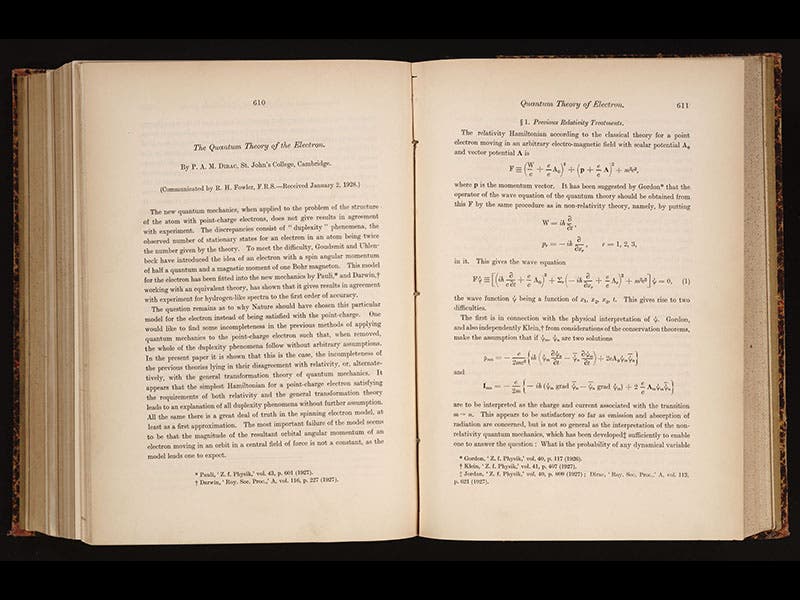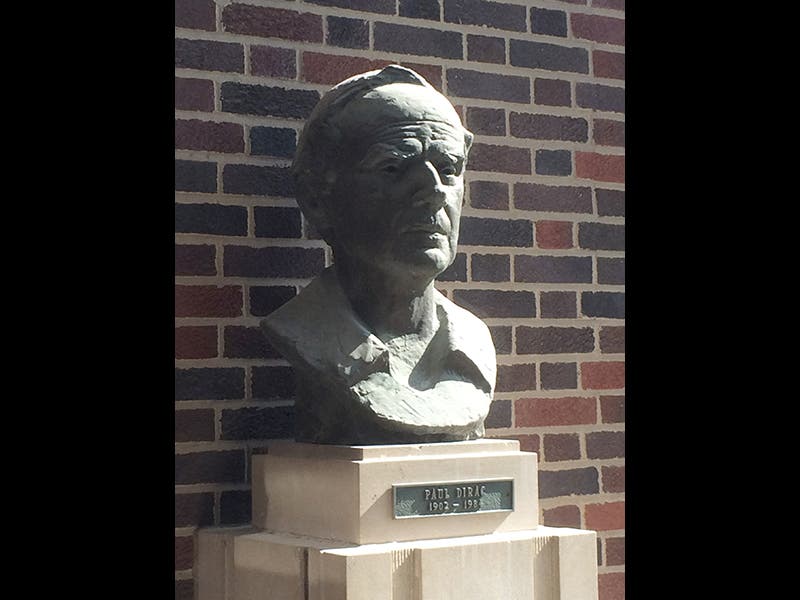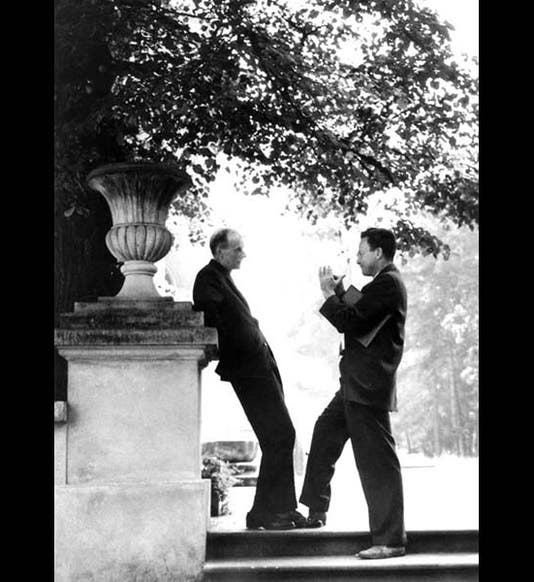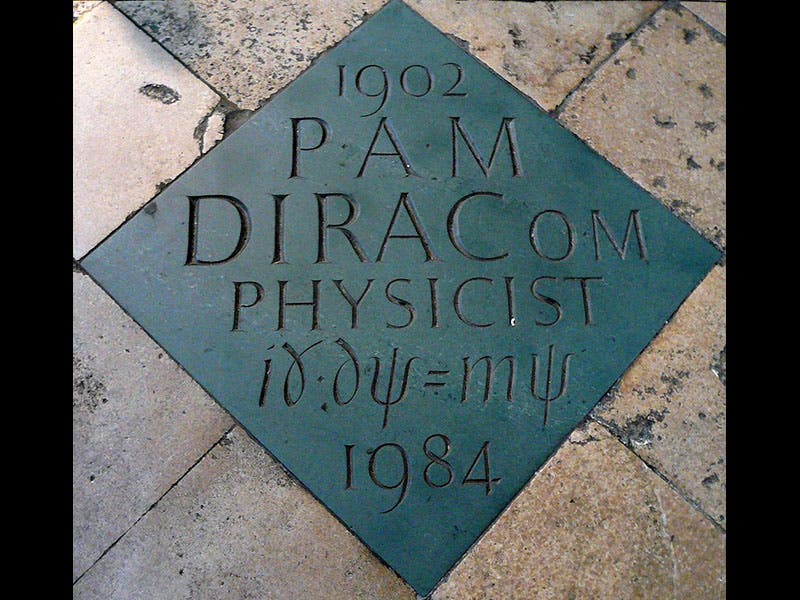Scientist of the Day - Paul Dirac


Paul Adrien Maurice Dirac, an English mathematician and physicist, was born Aug. 8, 1902. Dirac was in graduate school when Erwin Schrödinger demonstrated that the hydrogen atom could be represented by a wave equation, the solutions of which predict all the energy states of the atom. It was the birth of quantum mechanics, and Dirac took to it immediately, completing the first ever-thesis in quantum mechanics in 1926. The only problem with Schrödinger's wave equation is that it did not take relativity theory into account. Special relativity was 20 years old in 1925, and yet physicists had been unable to produce a theory of the atom that accounted for both quantum and relativistic effects. That was Dirac's cue. In 1928, he published a milestone paper, "The Quantum Theory of the Electron," in the Proceedings of the Royal Society of London (second image). In that paper, he worked out the details of a relativistic quantum theory. It marked the beginning of what would later be called quantum electrodynamaics, or QED, a field brought to maturity by Richard Feynman. Dirac’s 1928 paper also gave us the "Dirac equation," essentially a relativistic Schrödinger equation, and one of the solutions of the Dirac equation predicts the existence of electrons with positive charge and negative energy. Dirac took these solutions seriously, and in subsequent papers proposed the real existence of positive electrons, or positrons, the first postulated members of the family of anti-particles, or anti-matter. HIs prediction was confirmed in 1932, when the positron was experimentally detected. For his work in quantum mechanics, Dirac received the Nobel Prize in Physics in 1933, sharing the honor with Schrödinger.
Dirac is also legendary in physics lore for his taciturn nature, his inability to engage in idle chatter, and his devotion to logic, at the expense of irony and sarcasm of any kind. There are many Dirac stories, some of which may even be true; here is one that he liked to tell himself, illustrating his fondness for logical precision: A parish priest visited a female parishioner and noted that she had ten children, 5 sets of twins. “My goodness,” the priest said, “do you always have twins?” “Not at all,” said the woman. “Sometimes we have nothing."
There are many photographs of Dirac with other notable physicists, such as Werner Heisenberg and Niels Bohr; we are fond of this one (first image), showing an impossibly lank Dirac leaning against a stone post and listening to Feynman, one of his few true intellectual peers. The photo was taken in 1962. Dirac is buried in Tallahassee, Florida, but a memorial plaque has been installed in Westminster Abbey, sporting the Dirac equation (third image). The move to install the plaque drew some understandable protest from the Dean of the Abbey, since Dirac was an atheist. But he is far from being the only non-believer to be honored within its walls; Charles Darwin is actually buried there, not too far away.
The Library owns a heroic (larger than life) bust of Dirac, sculpted by Kurt Isenstein, which sits all by itself on the east side of the balcony, outside the main reading room (fourth image). Dirac would have approved of his isolated setting.
Dr. William B. Ashworth, Jr., Consultant for the History of Science, Linda Hall Library and Associate Professor, Department of History, University of Missouri-Kansas City. Comments or corrections are welcome; please direct to ashworthw@umkc.edu.






![“Aurora Borealis,” hand-colored wood engraving by Josiah Wood Whymper, [Natural Phenomena], plate 2, 1846 (Linda Hall Library)](https://assets-us-01.kc-usercontent.com:443/9dd25524-761a-000d-d79f-86a5086d4774/0245ffcb-b70c-477c-8792-0a73ebd54eb2/Whymper%2011.jpg?w=210&h=210&auto=format&fit=crop)

